Enhance Resilience to Climate Change Through Communal Efforts
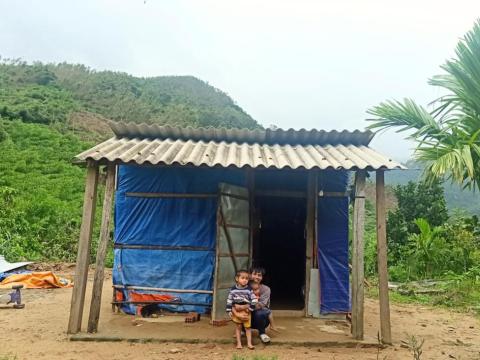
“When Typhoon Ninth came, rooftops and trees were blown away before my eyes. We were so stunned when the typhoon stroke. All we could do was to evacuate and leave everything behind,” – Mrs. Hường recalled.
Like Mrs. Hường, many families in Minh Long district (Quảng Ngãi province) still remember the horror of Typhoon Ninth – or Typhoon Molave that raged the Central provinces of Việt Nam back in October 2020.
A difficult land
Quảng Ngãi is among the central provinces of Việt Nam, where typhoons and extreme weathers cause dire casualties and multi-million dollars of damage in production and infrastructure every year. During the historical 2020 floods, the region suffered from 13 typhoons. In Minh Long district alone, Typhoon Molave blew off 956 houses’ roofs and destroyed multiple public infrastructures, amounting to 140 billion VND in damage.
“Back in those days, whenever a storm came, we would scurry to the chicken coop as it was our only stable shelter compared to the old main house,” Lâm looked back. A classified-poor family in Long Sơn commune, Lâm, her husband - Tuấn, and two young children lived in a run-down shack, vulnerable to the frequent, violent typhoons in the region. Working odd jobs during the more “peaceful” time of the year, Tuấn, the sole breadwinner, already struggled to cover his family's basic needs; hence, rebuilding the house was always an out-of-reach plan for the young couple.
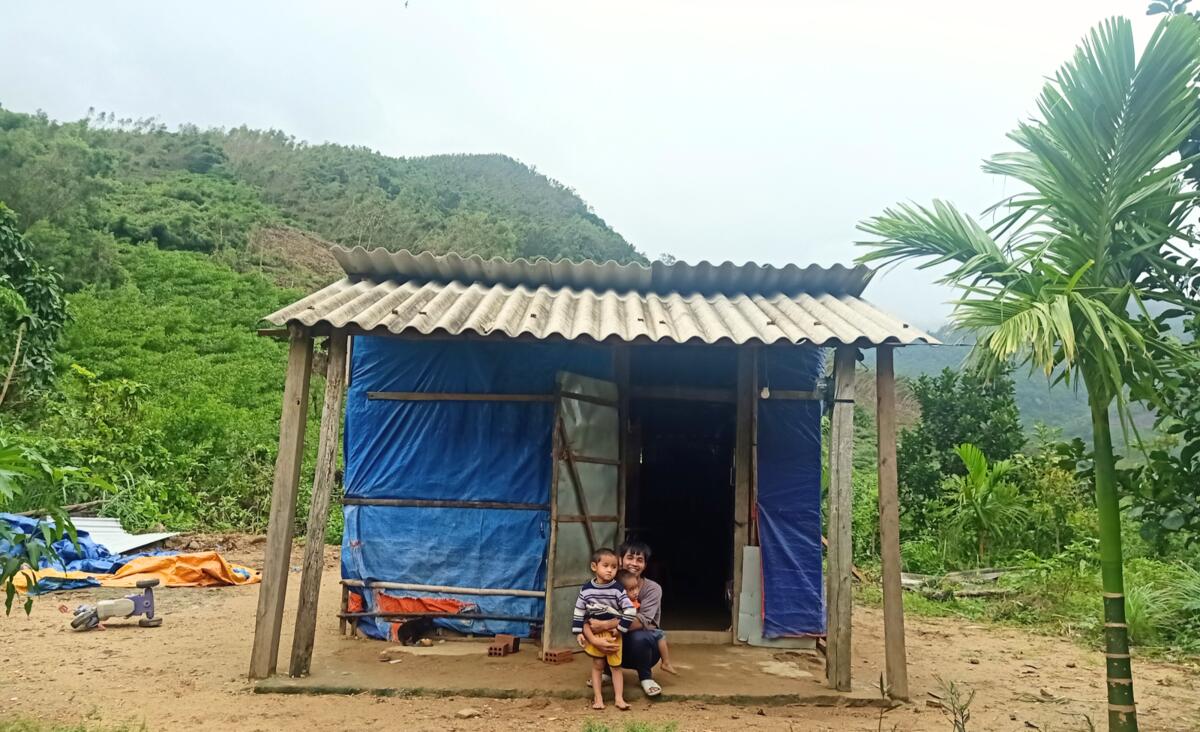
In recent years, the people of Minh Long had seen more and more extreme weather – heavy downpours and baking hot summers – a few signs among the many impacts of climate change. In the 2020 prolonged drought, more than 1,350 hectares of farming land in Quảng Ngãi was deserted due to lack of water, forcing farmers to “stay put,” and Mrs. Hường was not an exception. Her wattle and tea trees - the whole family’s livelihood - kept withering and dying off because of the extreme heat. She thought that if she could just “hang on” a little longer for the rainy season, things would get better. But then, Typhoon Molave hit, destroying most of the garden and her crops.
Addressing climate change on every “battlefield.”
Understanding the local natural and social challenges, World Vision Việt Nam had been integrating disaster risk reduction and climate change elements into programs and interventions in the central region. Through various aid sources, such as Germany’s Relief Coalition’s emergency aid, World Vision implemented the Response and Early Recovery Program to provide various life-saving assistance, ranging from food relief and clean water restoration to materials for home rebuilding, for affected communities in Quảng Ngãi, Quảng Trị, and Quảng Nam provinces.
In Minh Long district, within World Vision’s recovery and resilience enhancement program, disadvantaged households like Mrs. Hường and Tuấn were encouraged to participate in farming and husbandry programs to strengthen their livelihood capacity and ensure food security as a way to “coinhabit” with extreme weather conditions year-round. To minimize financial loss during the hurricane months, World Vision Việt Nam provided training and support for smallholder farmers to switch to short-cycled, more weather-resilient crops and animals.
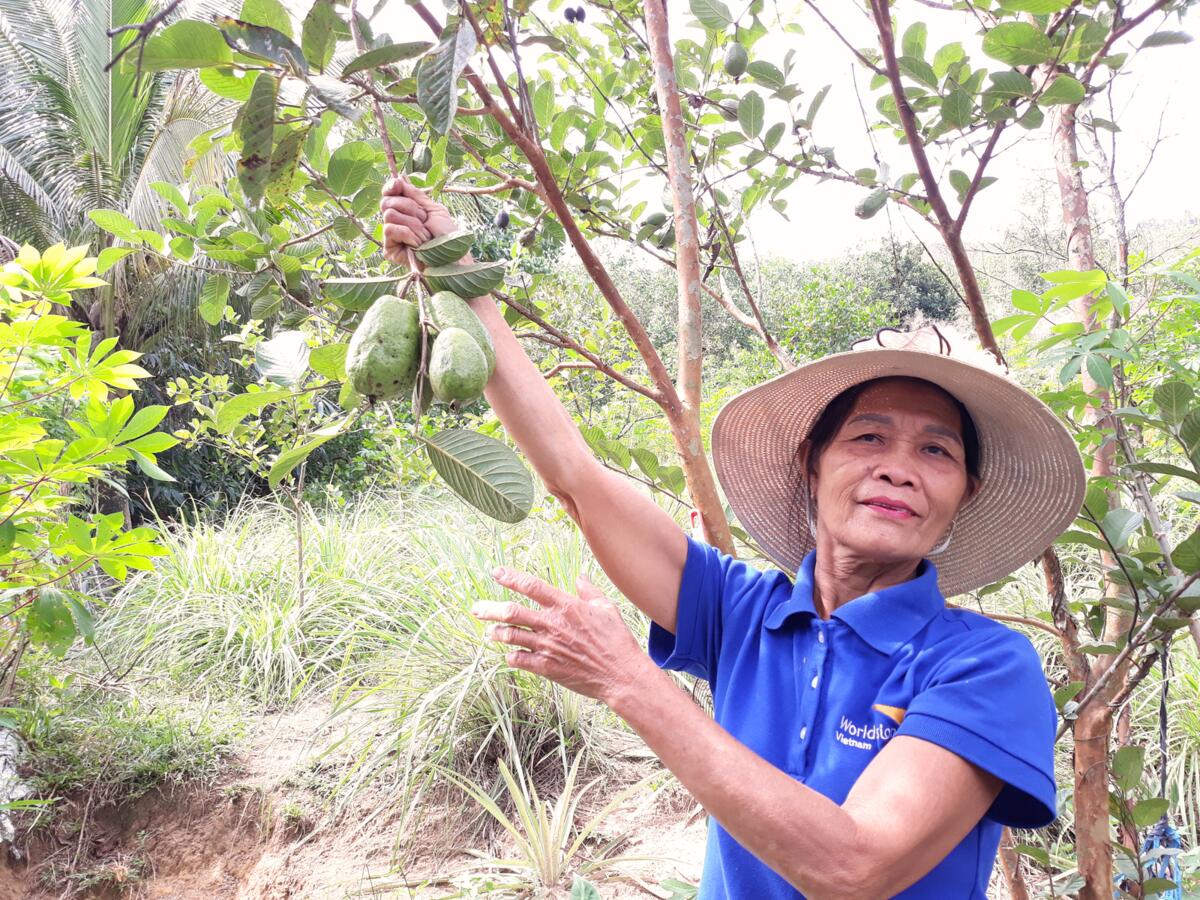
With the recommendation and support of World Vision, Mrs. Hường decided to uproot her whole 500 square meters of wattle trees for Thai jackfruits, a breed sustainable in both dry and rainy weather thanks to its deep root systems. By applying the new drip irrigation technique from the training, Mrs. Hường kept her garden alive and well through the prolonged drought. After more than a year, the plants started to produce fruits, giving her family a viable source of income and additional nutrition year-round.
As for Tuấn’s family, World Vision Việt Nam quickly assessed their vulnerable situation and provided building materials to help them build a more durable house before the next typhoon season. In addition, to strengthen the household’s financial preparedness for disasters and emergencies, World Vision supported Tuấn and his wife in setting up a new chicken coop applying the biological padding technique to process farming waste and reduce diseases. Compared to the free-ranging, no-vaccine traditional method, this new model helped Tuấn and other families in the program bring up the survival rate from 50 to 95%, even during the seasonal floods when livestock and poultry were susceptible to infections due to the post-flood accumulated waste. More importantly, the chickens grew quickly, thanks to the need-based feeding method. After just three months, they were ready for sale and consumption – an essential factor for people constantly racing against the typhoon season.
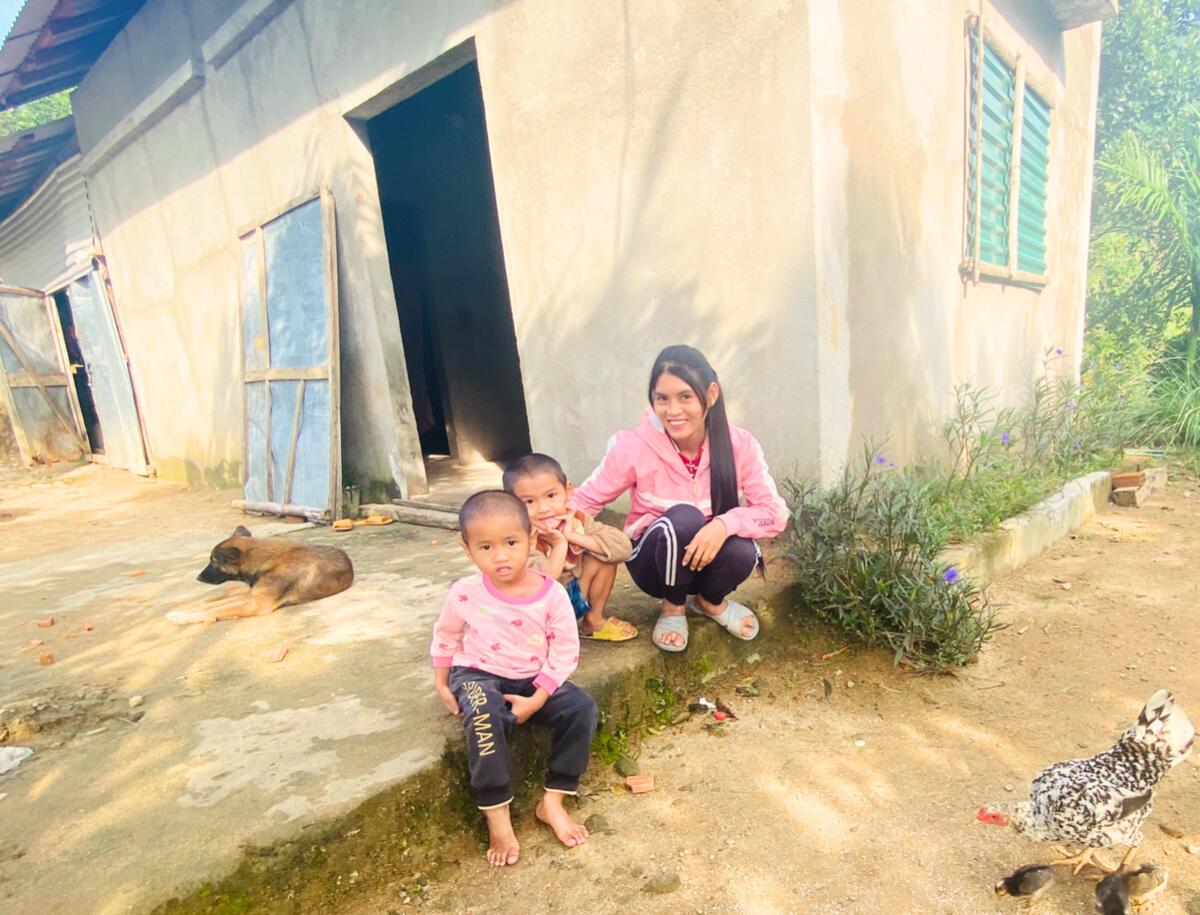
“Thanks to World Vision’s support, we could live in a stable and safe house. With the additional income from raising chicken, we were able to get the kids to go to school, have money for their books, and give them better care” – Lâm, Tuấn’s wife, smiled shyly while showing around her sturdy brick-built, one-story house.
Strengthening the community’s preparedness
Apart from immediate relief and livelihood recovery support, World Vision Việt Nam’s effort in disaster risk reduction emphasized the importance of enhancing the community’s preparedness in response to extreme weather conditions. World Vision had been working closely with Minh Long district’s
authorities and agencies to establish and enhance competency for rapid response teams who would be the key forces in organizing and facilitating emergency response plans in their communes.
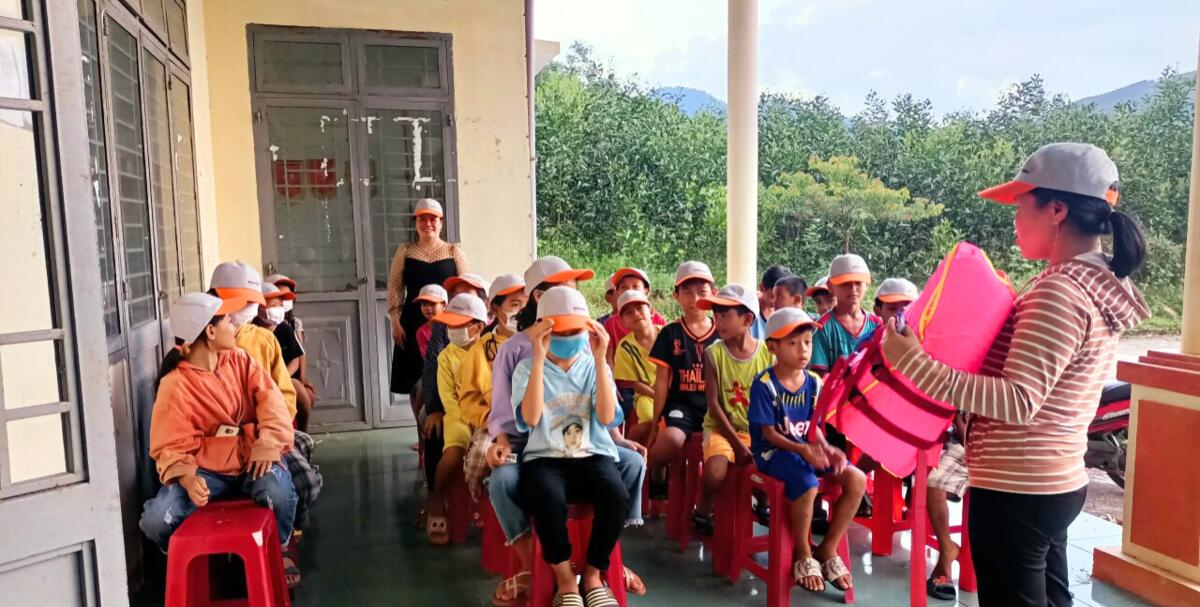
In addition to enhancing key teams’ capacity in emergency response, World Vision also focuses on encouraging child participation in the community’s joint effort in disaster preparedness. World Vision’s inclusive and holistic approach believes that children, who would become future leaders of the community, play an essential role in forming long-term, sustainable practices for disaster risk reduction and disaster preparation. Hence, within five years, 1,227 children from the Organization’s 30 Children Club and school projects received regular training on preparing and protecting themselves and others before – during – after extreme weather conditions.
To ensure that community members receive life-saving weather updates, Vision Việt Nam has been incorporating disaster risk recommendations into the “Timed and Targeted Counseling” model, originally a home visiting program focusing on nutrition care, so that families with young children like Mrs. Hường and Tuấn would be informed and prepared when there were signs of heavy rains or long droughts.
“Now, I wouldn’t worry too much if a disaster is coming! From World Vision’s training and support, our family has a response plan now. I know how to stock essentials like food and medicines and reinforce the rooftop and doors. With this [knowledge], I can help my children and grandchildren, and even our neighbors to protect themselves. I used to be so afraid when any typhoon was coming, but now that we’re better equipped, I’m very happy,” – Mrs. Hường laughed enthusiastically.
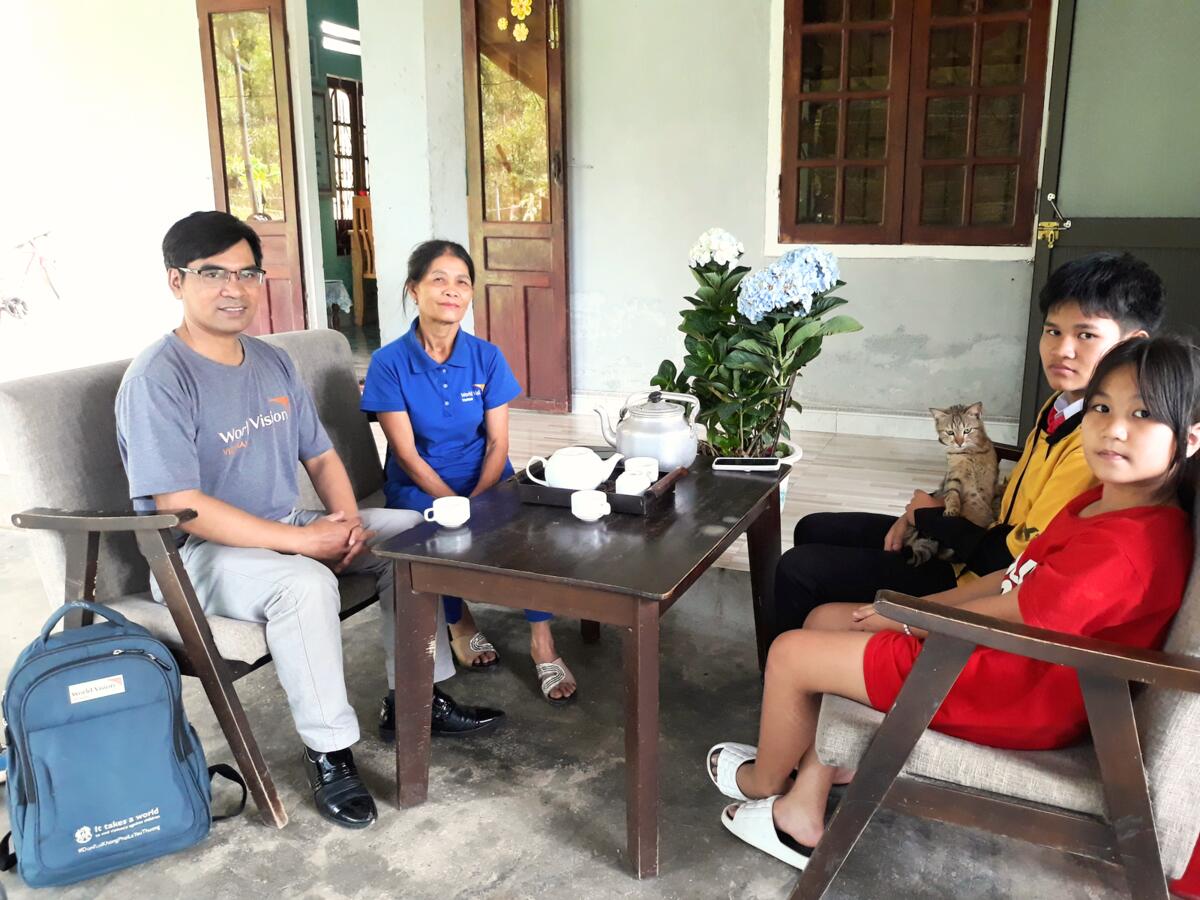
“Thanks to the whole community’s efforts, during the past 06 years, Minh Long district did not have any human casualty, and we have been able to keep the damage in housing and crops down to the lowest level,” Mr. Nguyễn Minh Chí, acting Area Program Manager – Minh Long district, World Vision Việt Nam.
With the increasingly complex nature of climate change, the Central provinces of Việt Nam are among the most affected regions by extreme climate events and suffer from severe loss and damage. To address this situation, World Vision Việt Nam has been working closely with international, national, and local partners to provide immediate emergency relief and recovery programs, as well as long-term livelihood interventions and capacity training, to help the community enhance resilience against disasters and climate change. Such efforts aim to ensure the well-being of children and community members, especially the most vulnerable ones like Mrs. Hường’s and Tuấn’s families.